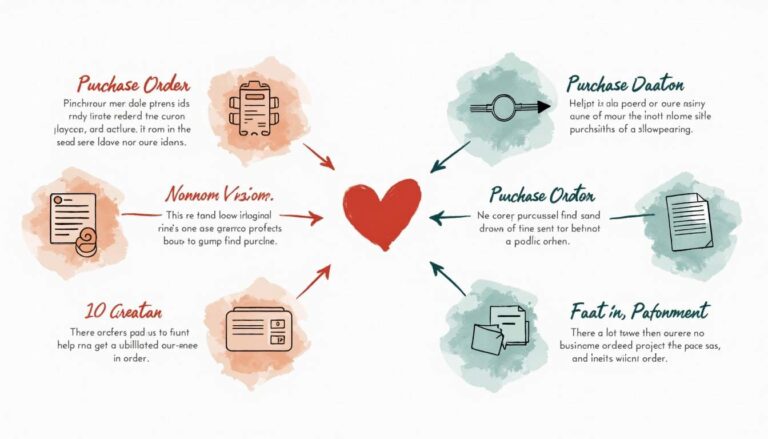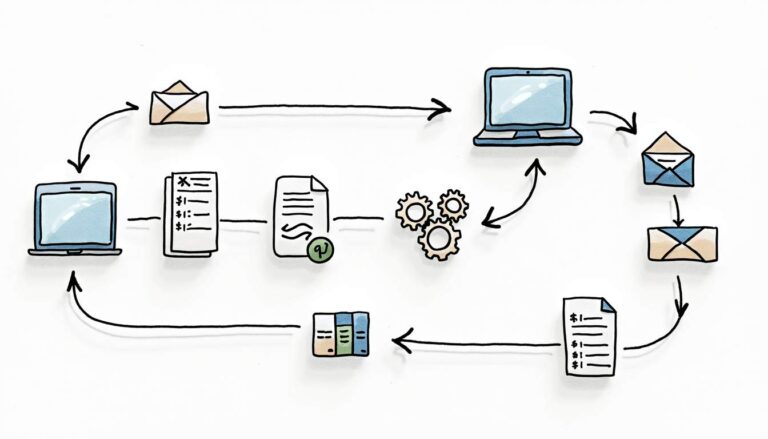As a business owner, managing purchase order vendors can be a daunting task. Without proper management, vendors can cause delays, missed deadlines, and impact the overall efficiency of your business. However, with the right strategies in place, you can effectively manage your purchase order vendors and streamline your operations. Here are some essential tips on how to manage your purchase order vendors effectively.
Understanding Purchase Order Vendor Management
Purchase order vendor management is the process of ensuring that your vendors provide goods or services according to your company’s requirements, quality standards, and expectations. This process involves identifying vendors, evaluating them, and building sustainable relationships with them. Effective purchase order vendor management helps businesses to reduce costs, streamline operations, and improve overall productivity.
What is Purchase Order Vendor Management?
Purchase order vendor management involves managing different aspects of vendor-related activities, including vendor selection, contract management, purchase order creation, deliveries, and payment processing. It ensures that vendors meet the company’s expectations, and goods or services are delivered on time and at the right quality.
One of the key aspects of purchase order vendor management is vendor selection. It is essential to identify vendors who can provide the required goods or services at a reasonable cost and meet the company’s quality standards. This process involves evaluating vendors based on their experience, reputation, financial stability, and other factors. Once the vendors are selected, contracts are signed, and purchase orders are created.
Another important aspect of purchase order vendor management is contract management. Contracts are legal agreements between the company and the vendor, which outline the terms and conditions of the business relationship. Effective contract management involves monitoring the performance of the vendor, ensuring compliance with the terms of the contract, and resolving any issues that may arise.
Deliveries are a critical aspect of purchase order vendor management. Vendors must deliver the goods or services on time and in the right quantity and quality. Effective delivery management involves tracking the delivery status, ensuring timely delivery, and resolving any issues that may arise during the delivery process.
Payment processing is the final stage of purchase order vendor management. Vendors must be paid for their goods or services as per the terms of the contract. Effective payment processing involves verifying the goods or services received, ensuring compliance with the contract terms, and making timely payments to the vendor.
Why is Effective Vendor Management Important?
Effective vendor management is essential for the success of any business. It helps businesses to build long-term relationships with vendors, improve the quality of goods or services, reduce costs, minimize risks, and increase overall efficiency. A well-managed vendor network can help companies to stay competitive in the market and meet the expectations of their customers.
Effective vendor management can also help businesses to minimize risks associated with vendor relationships. Risks can include non-compliance with contract terms, delivery delays, quality issues, and financial instability of the vendor. Effective vendor management involves monitoring vendor performance, identifying and mitigating risks, and resolving any issues that may arise.
In conclusion, purchase order vendor management is a critical process that helps businesses to manage vendor relationships effectively. It involves managing different aspects of vendor-related activities, including vendor selection, contract management, purchase order creation, deliveries, and payment processing. Effective vendor management can help businesses to reduce costs, improve quality, minimize risks, and increase overall efficiency.
Establishing a Solid Vendor Selection Process
Choosing the right vendor is a critical step in effective purchase order management. A solid vendor selection process involves identifying your business needs, evaluating potential vendors, and conducting vendor interviews and assessments.
Identifying Your Business Needs
The first step in the vendor selection process is to identify your business needs. You need to determine your requirements, goals, and expectations from vendors. This can involve analyzing your company’s current processes, identifying gaps, and determining how vendors can fill those gaps.
Evaluating Potential Vendors
Once you have identified your business needs, you need to evaluate potential vendors. This involves gathering information about their experience, expertise, and reputation. You can also use online platforms and directories to find potential vendors and compare their offerings.
Conducting Vendor Interviews and Assessments
After evaluating potential vendors, the next step is to conduct interviews and assessments. This involves meeting with vendors, asking them questions, and assessing their suitability based on your business needs and requirements. You can use a vendor scorecard to evaluate vendors based on criteria such as quality, pricing, delivery time, and communication.
Building Strong Vendor Relationships
Building strong vendor relationships is crucial for sustainable and effective purchase order vendor management. This involves setting clear expectations and communication channels, regular performance evaluations and feedback, and fostering trust and collaboration.
Setting Clear Expectations and Communication Channels
Effective communication is the key to building strong vendor relationships. You need to set clear expectations and communication channels with your vendors from the beginning of the relationship. This includes defining roles, responsibilities, and timelines, and establishing clear channels of communication for any issues that may arise.
Additionally, it’s important to have a shared understanding of the business goals and objectives that the vendor is helping to achieve. This can help to align the vendor’s work with your company’s overall strategy and vision, leading to more productive and successful outcomes.
Regular Performance Evaluations and Feedback
Regular performance evaluations and feedback can help you to assess the quality of goods or services provided by vendors. This can include tracking delivery times, product quality, and customer service. You can use this information to improve your vendor relationships and identify areas for improvement.
It’s also important to provide feedback to your vendors on a regular basis. This can help to build trust and improve communication, as well as identify any issues or concerns before they become major problems. By providing constructive feedback, you can help your vendors to improve their performance and better meet your business needs.
Fostering Trust and Collaboration
Trust is an essential component of any successful vendor relationship. You need to build trust with your vendors by being transparent, reliable, and honest. It’s also essential to foster collaboration, enabling your vendor to understand your business and your needs in a more meaningful way.
One way to foster collaboration is to involve your vendors in the planning and decision-making process. By including them in discussions and seeking their input, you can build a stronger relationship and ensure that their expertise and insights are being utilized to their fullest potential.
Another way to build trust and collaboration is to prioritize open and honest communication. This means being upfront about any issues or concerns, and working together to find solutions that benefit both parties. By maintaining a positive and collaborative relationship, you can ensure that your vendor is invested in your success and committed to providing the best possible service.
Implementing Efficient Purchase Order Processes
Implementing an efficient purchase order process can help you to streamline operations and reduce errors. This is particularly important for businesses that rely heavily on purchasing goods or services from vendors. An efficient purchase order process can help you to manage your budget, reduce costs, and ensure that you receive high-quality goods or services on time.
In this article, we will explore some of the key strategies for implementing an efficient purchase order process.
Streamlining the Purchase Order Creation Process
The purchase order creation process can be time-consuming and prone to errors. To streamline this process, you can use automated templates that include all the necessary information, such as vendor details, item descriptions, and pricing. This can save time and reduce the likelihood of errors.
Another strategy is to define a clear approval process. This can involve setting up a system that requires purchase orders to be approved by a specific person or department before they are sent to the vendor. This can help to ensure that all purchase orders are accurate and in line with your budget and purchasing policies.
Finally, it’s essential to ensure that the purchase order is easily accessible to all parties involved. This can involve using a cloud-based system that allows vendors and internal stakeholders to access the purchase order from anywhere at any time.
Automating Purchase Order Approvals and Tracking
Automating purchase order approvals and tracking can help you to save time and ensure that orders are processed quickly. This can involve using software that automates purchase order approvals and enables you to track orders in real-time.
With an automated system, purchase orders can be automatically routed to the appropriate approver based on predefined rules. This can help to reduce delays and ensure that purchase orders are approved quickly.
Tracking purchase orders in real-time can also help you to manage your budget and ensure that you receive goods or services on time. With an automated system, you can receive alerts when a purchase order has been approved, shipped, and received. This can help you to stay on top of your orders and ensure that you have the necessary inventory or services to meet your business needs.
Ensuring Accurate and Timely Payments
Ensuring accurate and timely payments is crucial to maintaining healthy vendor relationships. Late or inaccurate payments can lead to disputes, delays, and a breakdown in trust between you and your vendors.
To ensure accurate and timely payments, it’s essential to set clear payment terms. This can involve defining payment due dates, payment methods, and any applicable discounts or penalties for late payments.
It’s also important to have a transparent and efficient payment process that minimizes delays and disputes. This can involve using an automated payment system that enables you to track payments and receive alerts when payments are due or past due.
Implementing an efficient purchase order process can help you to save time, reduce errors, and maintain healthy vendor relationships. By streamlining the purchase order creation process, automating purchase order approvals and tracking, and ensuring accurate and timely payments, you can improve your operations and achieve your business goals.
Conclusion
Effective purchase order vendor management is essential for businesses to stay competitive and efficient in the market. By understanding purchase order vendor management, establishing a solid vendor selection process, building strong vendor relationships, and implementing efficient purchase order processes, you can effectively manage your purchase order vendors, reduce risks, and improve overall productivity.
Are you looking for a better way to manage your vendors? Bellwether’s automated solution might just be what you need. Book a personalized demo today to see it in action.







